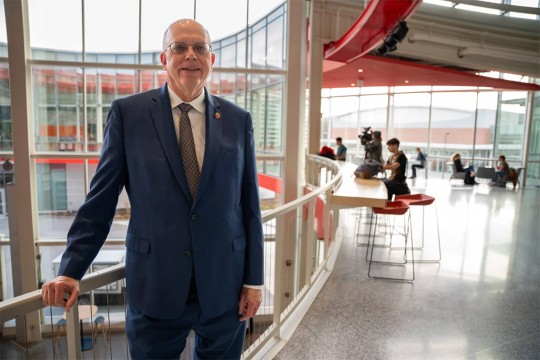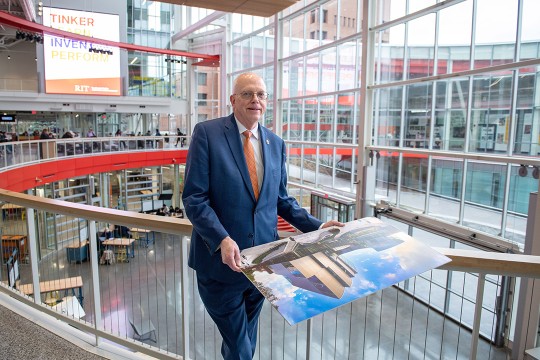E-waste Poses Pollution Problems for Developing Nations
RIT sustainability professor focuses research on growing global issue
A. Sue Weisler
Eric Williams, associate professor in the Golisano Institute for Sustainability, is researching electronic waste.
In 2010, an estimated 7 million used and scrap computers were exported from the U.S., says Eric Williams, associate professor in the Golisano Institute for Sustainability at Rochester Institute of Technology.
And that’s just a small share of the worldwide circulation of electronic waste.
There are good and bad implications to this, Williams points out. Access to inexpensive, still-usable computers can benefit economically disadvantaged people. But dismantling scrapped devices to salvage raw materials has potentially dire environmental consequences. Unregulated recycling practices include open burning of PVC-insulated wires to reclaim the copper, or use of cyanide to recover gold from printed circuit boards.
“It’s a serious source of water, air and soil contamination,” Williams says. “There’s a need to mitigate the environmental impacts while maintaining the social and economic benefits, but addressing the issues has been hindered by the lack of reliable information. There’s no official data that tells us how much e-waste is being exported.”
Williams and Ramzy Kahhat of the Department of Engineering, Pontificia Universidad Católica del Perú, Lima, Peru, are trying to remedy that problem. Their research has led to a peer-reviewed article, “Materials flow analysis of e-waste: Domestic flows and exports of used computers from the United States,” published by Elsevier in the online journal Resources, Conservation and Recycling. They began their work, supported in part by funding from the National Science Foundation and the Commission for Environmental Cooperation of North America, several years ago at Arizona State University.
The two developed an approach based on material flow analysis that uses surveys of residential and business/public as primary data sources as well as data from recycling, landfill and computer adoption studies. Their case study focused on desktop and laptop computers disposed of in the U.S. during 2010.
“We determined that 40 million computers were disposed of in various ways,” Williams says. “Of that, 30 percent were reused in the U.S., 20 to 47 percent were recycled and 7 to 9 million went into landfills here—about the same average that were shipped overseas.”
Williams and Kahhat are also addressing green electronics globally in a new book, E-Waste Management: From Waste to Resource, (published by Routledge, co-edited with Klaus Hieroymi). The book comprises 12 topics addressed by 24 top international researchers and industry experts.
“Our goal was to look at the entire e-waste sector from the cheapest way of handling e-waste in an environmentally sound way to how e-waste can help to reduce excavation of new substances and lead to a sustainable economy,” Williams says. “We believe it is an ideal resource for policy-makers, waste managers and researchers.”
The Golisano Institute for Sustainability was formed in 2007 thanks to a $10 million gift from Paychex Inc. founder and chairman B. Thomas Golisano. It is home to one of the world’s first Ph.D. programs in sustainability, as well as master’s degree programs in sustainable systems and sustainable architecture. The institute conducts research in nanotechnology, alternative-energy development and validation, sustainable design and pollution prevention.















